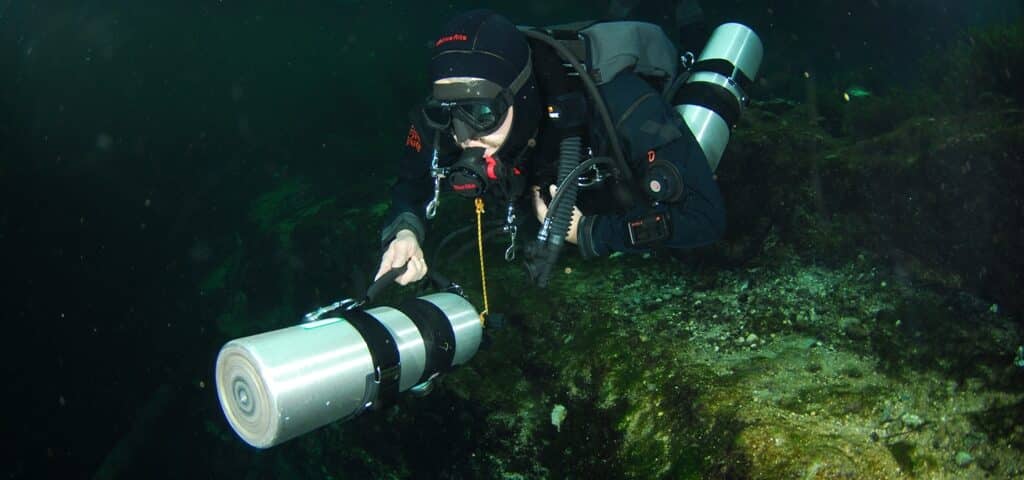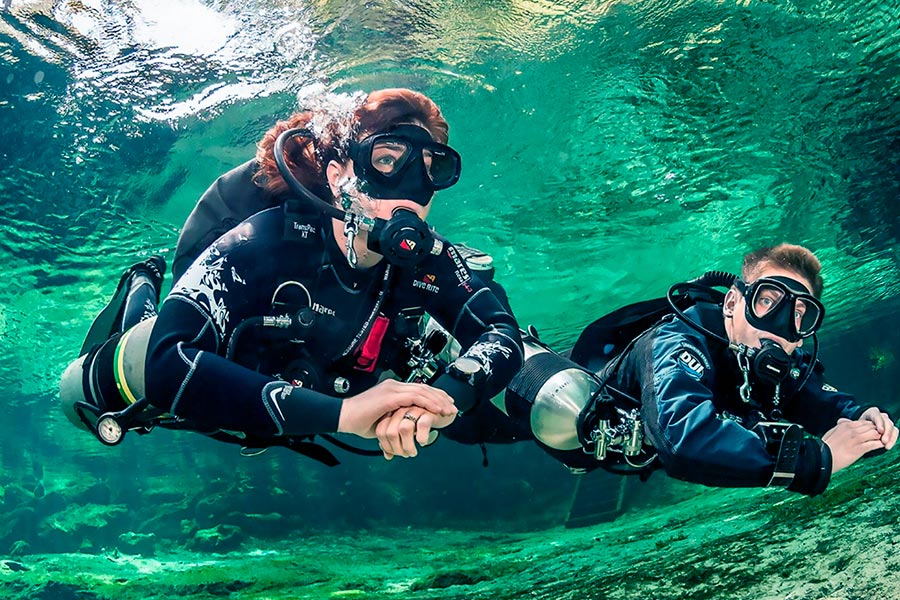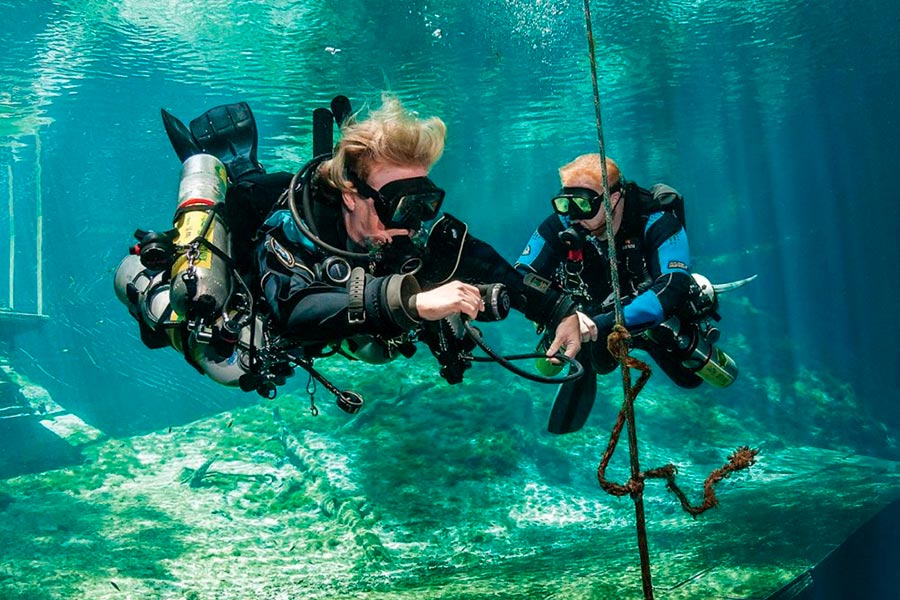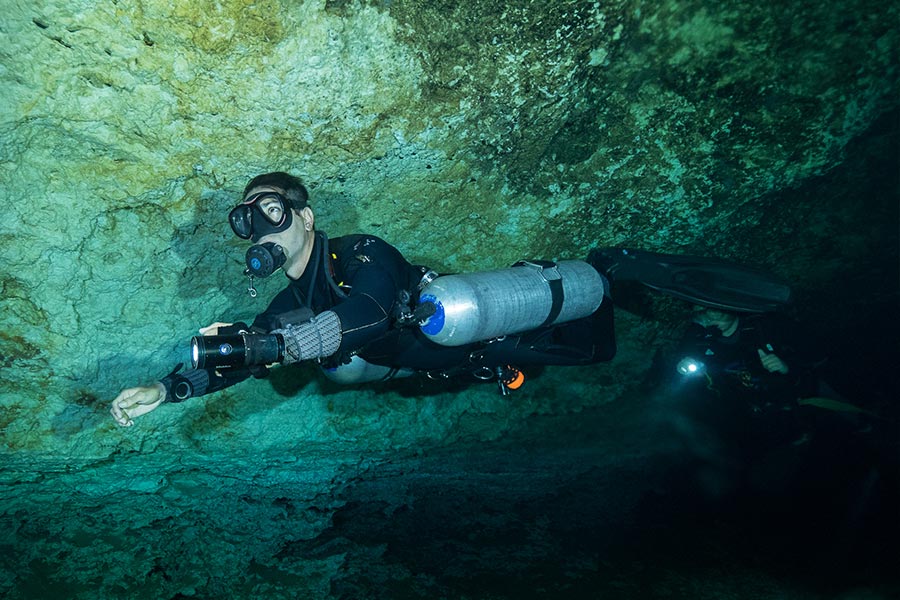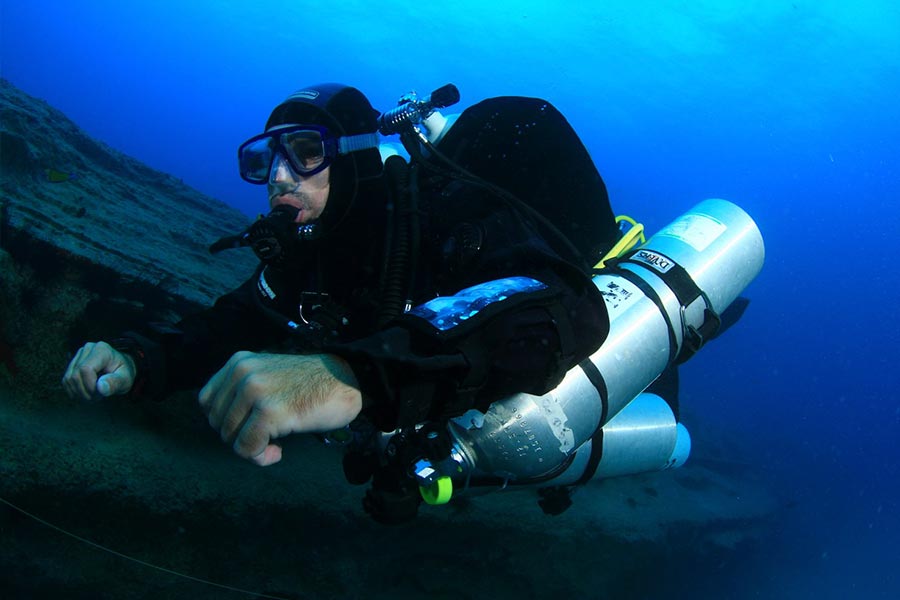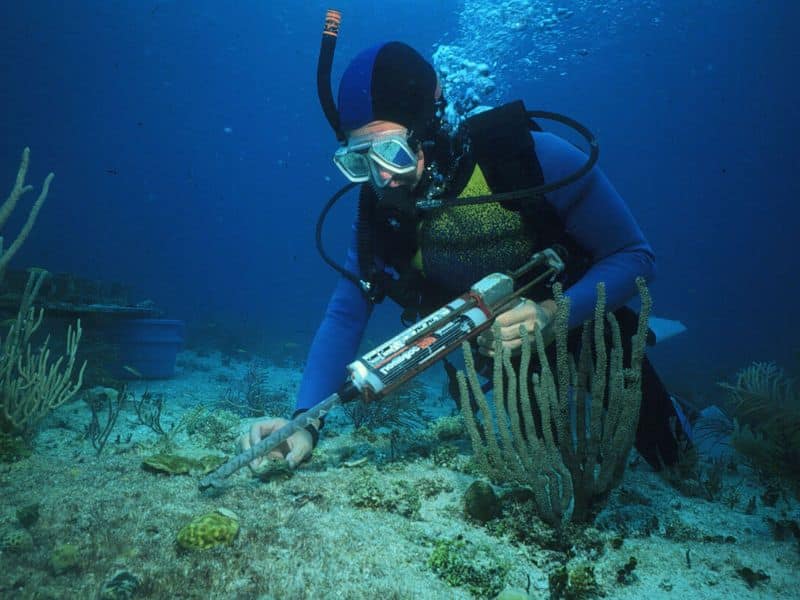3. What Is the History of Sidemount Diving?
Did you know that double-tank diving is actually older than single-tank diving? In 1944, the legendary Jacques Cousteau was already diving with a triple 6-liter tank at 150 bars. Initially, diving was mainly intended for professionals and military purposes, and the use of double tanks provided them with enough gas to carry out their underwater tasks.
With the introduction of dive tables and decompression control, recreational divers found that a single tank was sufficient for their needs.
However, there are different configurations for diving with two separate tanks, such as the classic twin tanks and the Side-mount scuba configuration. While these setups are commonly used in technical diving, even recreational divers can benefit from the versatility of Sidemount diving!
Diving Sidemount is a contemporary diving technique that traces its origins back to the early days of cave diving. In the 1960s, Cave divers in the United Kingdom began experimenting with side mount configurations to explore caves that had submerged passages along the way.
One of the pioneers of side mount diving was Mike Boone, a British cave diver who devised the “English System.” This innovative approach involved mounting two small cylinders on the sides of the body, secured with a harness.
As word spread, the “English System” gained popularity among cave divers worldwide. However, some divers, like those in Florida, couldn’t use the exact same configuration because their explorations took place in caves with constantly submerged passages. So, they adapted the setup by adding a buoyancy system and repositioning the cylinders to be closer to the body. This allowed them to navigate through narrow passages.
Over time, the configuration became increasingly popular among cave divers worldwide, and nowadays, it is a highly favored setup for both technical and recreational divers.
Its versatility and comfort make it suitable for various diving environments. With the convenience of Side-mount BCDs and specialized scuba Sidemount gear, divers can set up their Sidemount scuba configuration to suit their preferences and maximize their underwater experience.




